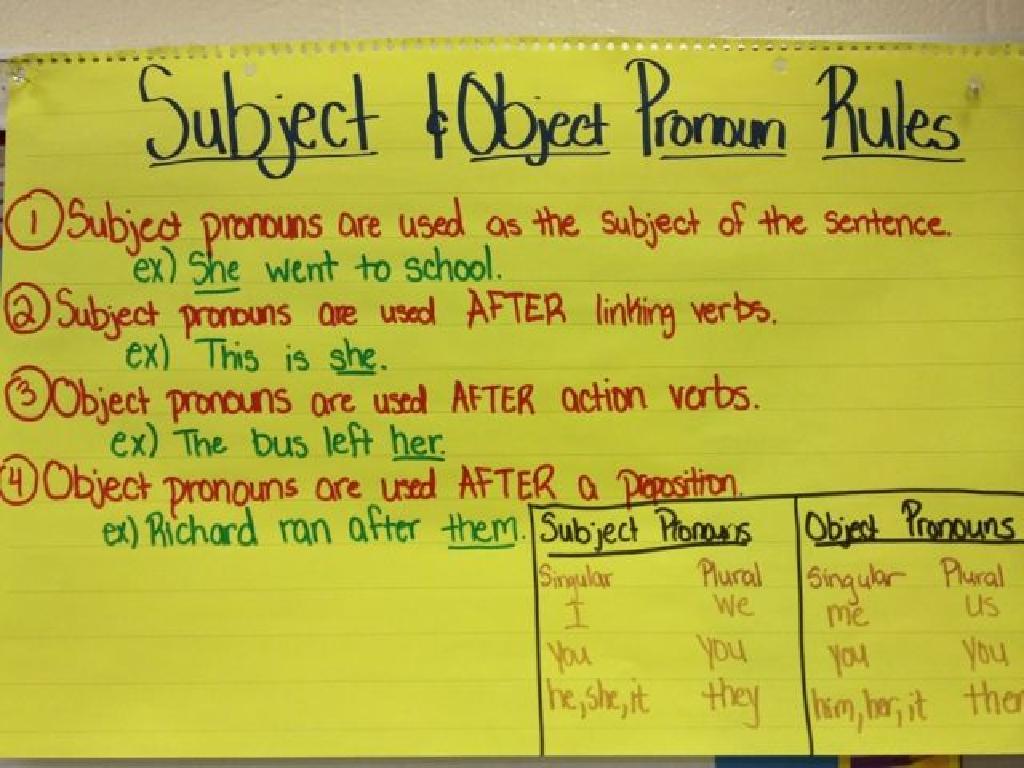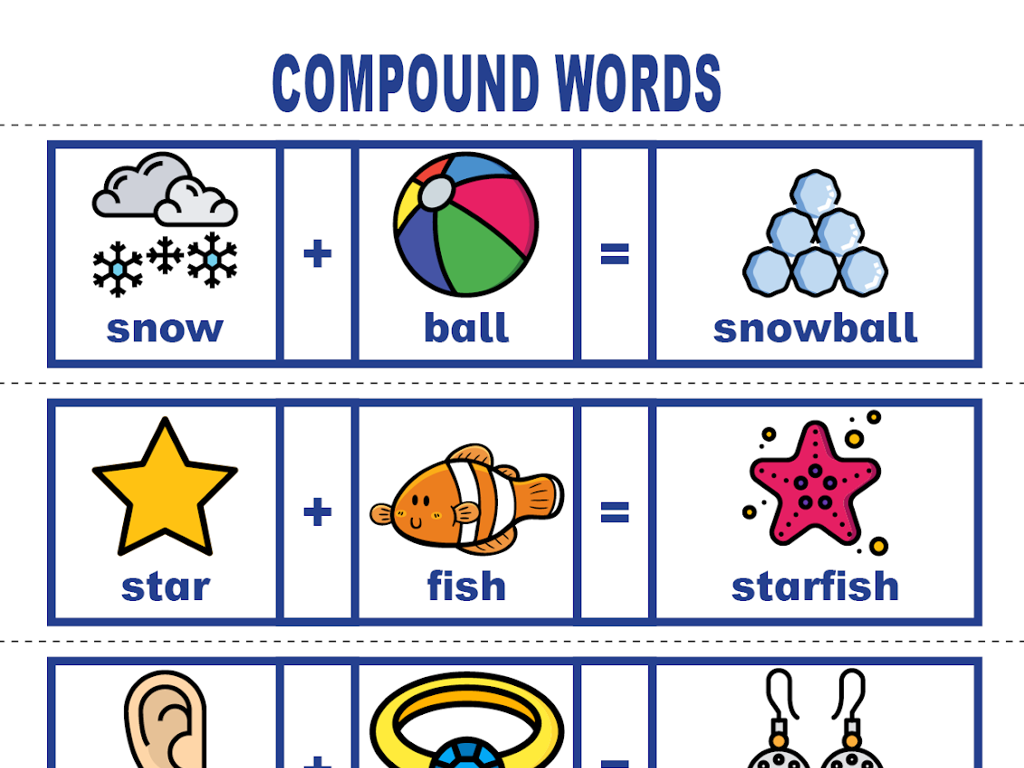Subtract From Three-Digit Numbers
Subject: Math
Grade: Second grade
Topic: Subtraction: Three Digits
Please LOG IN to download the presentation. Access is available to registered users only.
View More Content
Today’s Adventure: Taking Away with Three-Digit Numbers!
– What does subtraction mean?
– Subtraction means taking away from a group or number.
– Daily life subtraction examples
– Using subtraction when shopping or cooking.
– Steps to subtract three-digit numbers
– Line up the numbers and subtract one column at a time.
– Practice makes perfect!
|
This slide introduces second graders to the concept of subtraction with three-digit numbers. Begin by explaining subtraction as the process of taking away from a total amount. Provide relatable examples such as determining how much money is left after buying a toy or how many cookies remain after some are eaten. Then, outline the steps to subtract three-digit numbers, emphasizing the importance of aligning the numbers by place value and subtracting each column starting from the right. Encourage students to practice with different problems to gain confidence. The goal is to make them comfortable with the concept and process of subtraction in various contexts.
Subtraction Review: Mastering the Basics
– Review: Subtracting 1 & 2-digit numbers
– Remember how we subtract smaller numbers?
– Recall subtraction facts
– Quick facts help us subtract quickly!
– Group practice with simple problems
– Let’s solve 45 – 3 or 16 – 5 as a class.
– Build confidence in subtraction skills
|
This slide is aimed at refreshing the students’ memory on subtraction with smaller numbers before moving on to three-digit subtraction. Start by reviewing how to subtract one and two-digit numbers, ensuring that the students are comfortable with the process. Reinforce their knowledge by recalling subtraction facts, which are essential for quick mental calculations. Engage the class in solving a few simple subtraction problems together to promote participation and assess their understanding. This activity will help build their confidence and prepare them for more complex subtraction problems involving three-digit numbers. Make sure to provide positive feedback and support to all students during the practice time.
Understanding Three-Digit Numbers
– What are three-digit numbers?
– Review: Place Values
– Hundreds, Tens, and Ones places
– Example: Number 345
– 345 has 3 Hundreds, 4 Tens, and 5 Ones
– Breaking down into parts
– 345 = 300 + 40 + 5
|
This slide introduces students to the concept of three-digit numbers and the importance of place value in understanding and breaking down these numbers. Begin by explaining that three-digit numbers range from 100 to 999 and consist of a hundreds, tens, and ones place. Use the number 345 as an example to show how each digit represents a different value based on its position. Emphasize that understanding place value is crucial when it comes to performing operations like subtraction with larger numbers. Provide additional examples and encourage students to practice breaking down numbers into hundreds, tens, and ones to reinforce the concept.
Subtracting Three-Digit Numbers – Without Regrouping
– Understand subtraction without borrowing
– Example: 452 – 123
– Subtract each digit starting from the right
– Class activity: Solve together
– We’ll do a step-by-step walkthrough as a class
– Practice makes perfect
– Keep practicing with different numbers at home
|
This slide introduces the concept of subtracting three-digit numbers without the need to regroup, or ‘borrow’. Start by explaining that if each digit in the top number is larger than the corresponding digit in the bottom number, we can subtract directly. Use the example 452 – 123 to illustrate this point. Walk through the problem step by step with the class, subtracting one column at a time from right to left. Encourage participation by asking students to provide the answers for each step. After the example, engage the class in a collaborative activity where they solve a similar problem together. Conclude by emphasizing the importance of practice and encourage students to try more problems at home to reinforce their understanding.
Subtracting Three-Digit Numbers – With Regrouping
– Understanding regrouping
– Regrouping, or ‘borrowing’, is when you take from one place value to subtract.
– Example: 531 – 274
– Let’s break down 531 – 274 step by step, showing how to regroup.
– Practice subtraction with regrouping
– Try a problem on your own, using regrouping to find the answer.
– Steps to regroup correctly
– Remember to always start from the rightmost digit!
|
This slide introduces the concept of regrouping, an essential part of subtraction when dealing with three-digit numbers. Regrouping, often referred to as ‘borrowing’, is necessary when the top number in a column is smaller than the bottom number. Start by explaining the process step by step with the example 531 – 274, ensuring to highlight the regrouping process. After the example, encourage students to practice with a similar problem, guiding them through the steps. Emphasize starting from the right and moving left, and checking their work by adding the result to the subtracted number to see if it matches the original number. This slide sets the foundation for students to handle more complex subtraction problems independently.
Tips and Tricks for Easy Subtraction
– Start subtracting from right to left
– Check work by adding
– After subtracting, add to see if you get the original number
– Use number lines for help
– A number line can show you how far apart numbers are
– Visualize with base-ten blocks
– Blocks represent ones, tens, and hundreds
|
This slide is aimed at helping second-grade students understand the process of subtracting three-digit numbers. Emphasize the importance of working from right to left, starting with the ones place, then tens, and finally the hundreds. Encourage students to always check their work by using the inverse operation, addition, to ensure accuracy. Introduce number lines as a visual aid to understand the distance between numbers when subtracting. Lastly, use base-ten blocks to provide a hands-on experience, which can help students better grasp the concept of place value and the subtraction process. During the lesson, have students practice these tips with example problems and provide guidance as needed.
Let’s Practice Together: Subtraction Pairs
– Pair up for subtraction fun
– Receive a worksheet with challenges
– Worksheets will have easy to tough problems
– Solve the problems with your buddy
– Help each other and try your best
– Discuss your solutions with the class
– Explain the steps you took to find the answer
|
This class activity is designed to encourage collaborative learning and peer support. Distribute worksheets with a variety of subtraction problems, ensuring that each pair receives a sheet with problems suited to their skill level. Encourage students to work together, discussing each problem and using strategies taught in class to find the solutions. After completing the worksheet, each pair will share their answers with the class and explain the process they used to solve the problems. This will help reinforce their understanding of subtraction and improve their communication skills. Possible activities could include subtracting with regrouping, finding the difference between three-digit numbers, and solving word problems that require subtraction.
Subtraction Game Time!
– Engage in a subtraction game
– Solve puzzles in small groups
– Use your subtraction skills to solve fun puzzles
– Race to finish first
– The fastest group to solve all puzzles wins
– Earn a special reward!
– A surprise awaits the winning team!
|
This slide introduces a subtraction game designed to make learning fun and interactive for second graders. Organize the class into small groups to encourage teamwork. Provide a set of subtraction puzzles that are appropriate for their level, ensuring they involve three-digit numbers. Monitor the groups as they work through the puzzles, offering help as needed. The competitive element of racing to finish first will motivate the students, and the promise of a special reward will excite them. Possible rewards could be extra recess time, a homework pass, or a classroom privilege. This activity not only reinforces their subtraction skills but also promotes healthy competition and cooperation among classmates.
Wrapping Up: Subtraction Skills
– Review of three-digit subtraction
– Discuss easy and challenging parts
– Share what you found simple or hard
– Homework: Practice makes perfect
– Solve extra problems at home
– Aim to be a subtraction superstar!
– Keep practicing and you’ll excel!
|
As we conclude today’s lesson on subtracting three-digit numbers, we’ll recap what we’ve learned. Encourage the students to reflect on their understanding and to openly discuss which parts of the lesson they found easy or challenging. This discussion helps to reinforce their learning and allows you to identify areas that may need more focus. For homework, provide a set of subtraction problems that cater to different difficulty levels to ensure all students can practice at their pace. Remind them that consistent practice is key to becoming confident in subtraction. Celebrate their efforts and progress towards becoming subtraction superstars!






